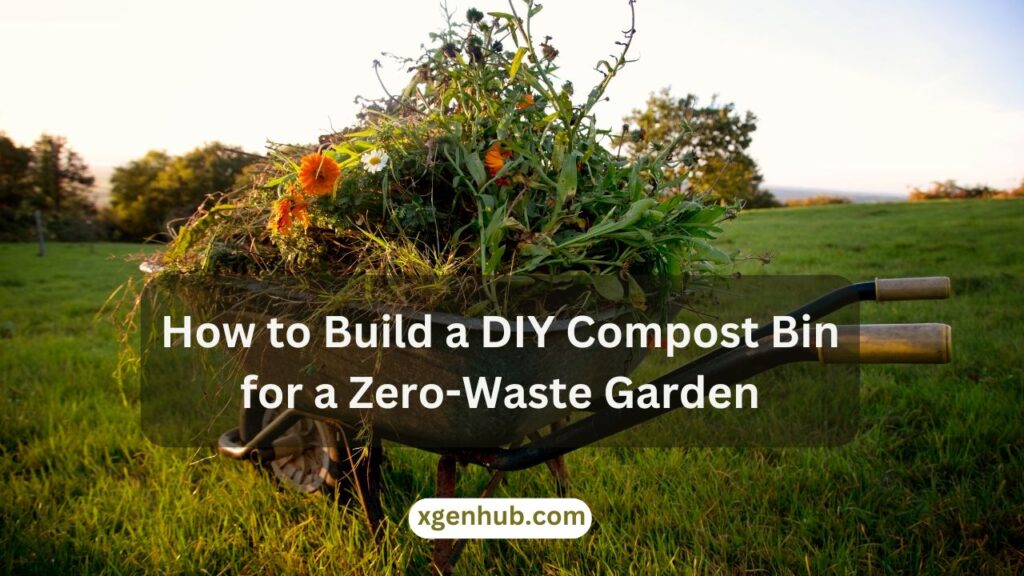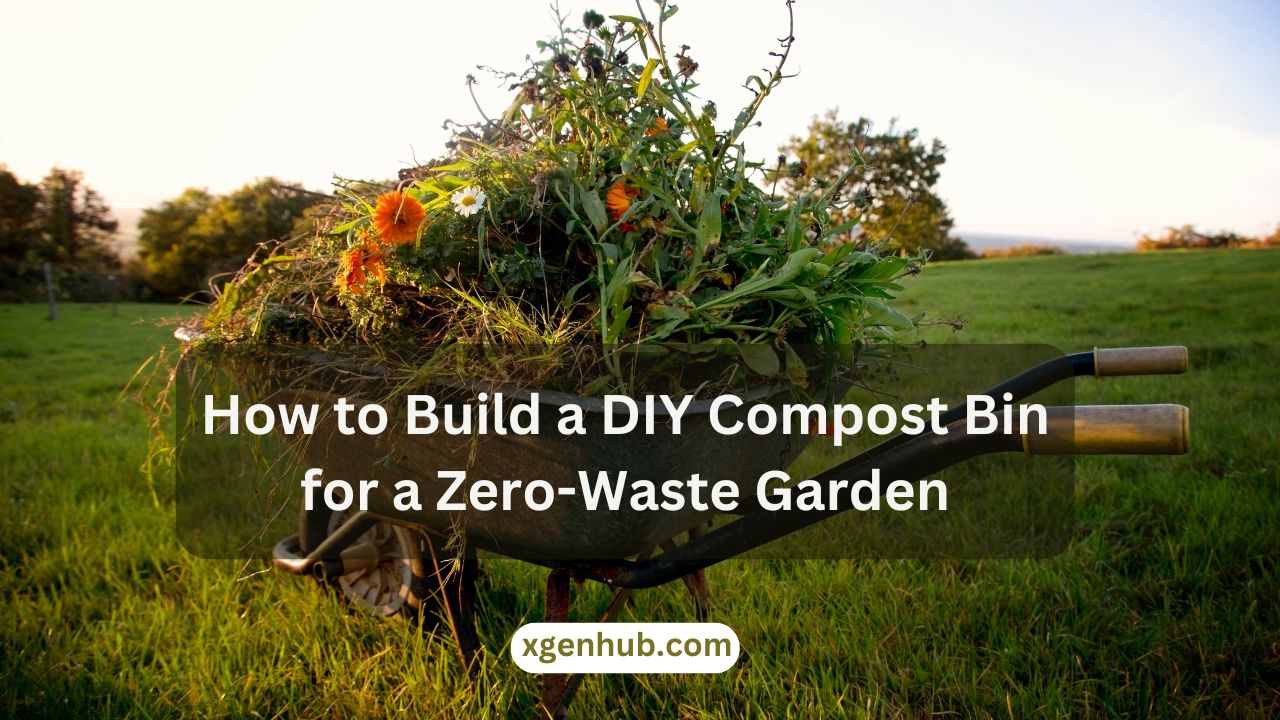Creating a DIY compost bin is one of the most sustainable and rewarding projects you can undertake for your garden. A compost bin allows you to recycle organic waste, enrich your soil, and contribute to a zero-waste lifestyle. This comprehensive guide will provide you with detailed instructions, tips, and insights on how to build your own compost bin, ensuring that you can maximize both its efficiency and your gardening success.
Unlock Your Online Success! Watch Our Exclusive Video for FREE and Start Earning Today!

Understanding Composting: The Basics
What is Composting?
Composting is the natural process of recycling organic matter, such as food scraps and yard waste, into a valuable fertilizer. By decomposing these materials, you create compost, a dark, nutrient-rich substance that enhances soil structure, provides essential nutrients, and promotes healthy plant growth.
Unlock Your Online Success! Watch Our Exclusive Video for FREE and Start Earning Today!
Why Composting is Important for a Zero-Waste Garden
Adopting composting practices is essential for creating a zero-waste garden. A zero-waste garden minimizes waste and uses resources efficiently. By composting, you reduce the amount of organic waste sent to landfills, which in turn decreases greenhouse gas emissions. Additionally, compost improves soil health, retains moisture, and helps in the fight against pests and diseases.
Benefits of Building Your Own DIY Compost Bin
1. Cost-Effective Solution
Building your own compost bin can save you money compared to purchasing a pre-made one. You can use readily available materials, making it an economical choice for gardeners on a budget.
Unlock Your Online Success! Watch Our Exclusive Video for FREE and Start Earning Today!
2. Customization
A DIY compost bin allows you to tailor its size and design to fit your garden space and composting needs. Whether you have a small apartment balcony or a large backyard, you can create a bin that suits your requirements.
3. Enhanced Control
By constructing your own compost bin, you have complete control over the composting process. You can adjust the bin’s aeration, moisture levels, and material types, optimizing conditions for decomposition.
Materials You Will Need
To build your DIY compost bin, you will need the following materials:
Unlock Your Online Success! Watch Our Exclusive Video for FREE and Start Earning Today!
- Wood Pallets or Lumber: For the structure. Cedar or redwood is ideal due to their natural resistance to decay.
- Wire Fencing or Chicken Wire: To keep pests out.
- Nails or Screws: To assemble the bin.
- Hinges (optional): If you want a door for easy access.
- Tarps or Lids (optional): To cover the bin and retain moisture.
Step-by-Step Guide to Building Your DIY Compost Bin
Step 1: Choose a Location
Select a suitable location for your compost bin. Ideally, it should be:
- Accessible: Ensure you can easily add materials and turn the compost.
- Shady or Partially Shaded: This helps regulate temperature and moisture levels.
- Well-Drained: Avoid low spots where water collects.
Step 2: Determine the Size
The size of your compost bin will depend on your available space and the amount of waste you plan to compost. A common size for a backyard compost bin is approximately 3 feet by 3 feet by 3 feet. This size promotes effective aeration and decomposition.
Step 3: Gather Your Materials
Collect your materials as listed above. If using wood pallets, ensure they are untreated and free of chemicals. Check for any damage or rot that might compromise the structure.
Step 4: Construct the Base
Unlock Your Online Success! Watch Our Exclusive Video for FREE and Start Earning Today!
Begin by constructing a base for your compost bin. If you are using wooden pallets, lay them flat on the ground to create a sturdy foundation. This will help with drainage and prevent the compost from sitting in water.
Step 5: Assemble the Sides
Using your wood pallets or lumber, create the walls of the compost bin. Attach the sides securely with nails or screws. If using wood, ensure the boards are spaced apart to allow for airflow. For a more finished look, you can add a front panel that can be opened for easy access.
Step 6: Add Ventilation
Airflow is crucial for effective composting. Use wire fencing or chicken wire to create openings that allow for proper aeration. You can attach this to the back or sides of your bin.
Step 7: Create a Lid (Optional)
To keep moisture in and pests out, consider adding a lid or tarp. This can be particularly beneficial in rainy climates, helping to maintain the right moisture balance in your compost.
Step 8: Start Composting!
Now that your compost bin is ready, it’s time to start composting! Begin by adding green materials (nitrogen-rich), such as kitchen scraps, grass clippings, and coffee grounds, along with brown materials (carbon-rich), like dried leaves, straw, and cardboard. Aim for a balance of about 2 parts brown to 1 part green.
Maintaining Your Compost Bin
Turning the Compost
To facilitate the decomposition process, turn your compost every few weeks using a pitchfork or shovel. This aerates the pile and encourages the growth of beneficial microorganisms..
Unlock Your Online Success! Watch Our Exclusive Video for FREE and Start Earning Today!
Monitoring Moisture Levels
Your compost should be as moist as a wrung-out sponge. If it’s too dry, add water or moist materials. If it’s too wet, add more dry materials to absorb excess moisture.
Troubleshooting Common Issues
- Odor: If your compost smells bad, it may be too wet or have too many green materials. Add more brown materials and turn the pile.
- Pests: Keep pests at bay by avoiding adding meat, dairy, and oily foods. Ensure the bin is securely closed.
- Slow Decomposition: If your compost isn’t breaking down, it may lack moisture, air, or a proper balance of materials. Adjust accordingly.
Using Your Compost
Unlock Your Online Success! Watch Our Exclusive Video for FREE and Start Earning Today!
After several months, your compost will be ready to use. It should have a dark, crumbly texture and a pleasant earthy smell. Use it to enrich your garden soil, enhance potting mixes, or as a top dressing for your plants.
Conclusion
Building a DIY compost bin for a zero-waste garden is a straightforward and rewarding endeavor. Not only does it allow you to recycle organic waste, but it also enriches your soil and promotes sustainable gardening practices. By following this comprehensive guide, you can create an effective composting system tailored to your specific needs, contributing to a healthier environment and a thriving garden. Embrace the composting process and watch as your plants flourish, thanks to the nutrient-rich compost you’ve created from your own kitchen scraps and yard waste. Happy composting!

Situs Slot Gacor Gampang Scatter Hari Ini Bet 200 #1 Terpopuler Mudah Maxwin
ANGKA805 Slot Gacor Link Utama Slot Gacor Bet 200 Agen Slot Maxwin Anti Rungkad
JNT303: Agen Situs Slot Gacor Hari Ini Deposit Via Qris Tercepat Gampang Maxwin
JNT303: Bocoran & Prediksi Keluaran Ekor HK Malam Ini Toto Online 4D Paling Jitu
JNT303: Situs Slot Gacor Maxwin Resmi Terbaru Haru Ini Banjir Freespin
JNT303